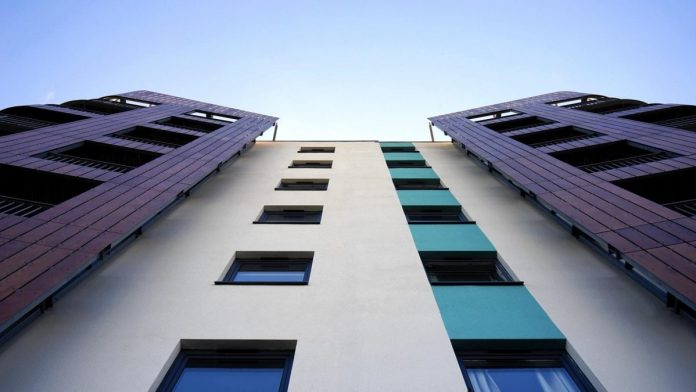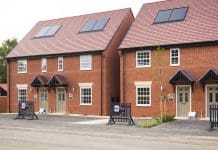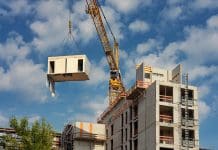As Theresa May calls on developers across Britain to play their part in tackling a critical shortage of affordable homes, it’s clear the UK’s housing crisis is still very much at boiling point. With the need to find a viable solution that will reduce build time, cut costs and meet environmental specifications, both government bodies and housing developers face a challenge – but could modular housing be the answer?
In this article, Elements Europe is examining modular construction practices and exploring their rapid rise in popularity – contemplating the practical potential of modular building units and considering how this revolutionary build method could shape the future for UK housing developments.
What is modular construction?
From the private rented sector to healthcare and hotels, modular construction can be applied in various different environments to provide an affordable, sustainable and efficient construction solution. With full construction of individual modules carried out offsite in a factory, the pre-built units are then transported to the development site for installation – offering numerous benefits to construction companies.
Efficient manufacturing and onsite assembly
Build times are a major consideration with any development but, with modular units being constructed remotely, many of the factors that can affect lead times on traditional builds can be negated – delivering a dramatically more efficient project overall.
For instance, modular manufacturing in a factory environment is unaffected by adverse weather conditions, allowing for better time management. Stringent manufacturing processes and the ability to build to precise specifications can also save significant time onsite, as issues are more quickly identified and more easily rectified throughout the manufacturing process.
Cost reductions that offer affordable housing
Modular construction also offers the opportunity to make significant reductions in operational and transportation-related costs. From the highly controlled production environment to a reduction in resources required for the installation, modular construction can have a decidedly positive impact on budget management – reducing overheads and saving time. This means savings can be passed through construction companies to potential homeowners, providing affordable accommodation that remains profitable for developers.
Utilising the innovation of lightweight materials
A key part of modular design is utilising the latest construction innovations, particularly in the form of lightweight materials – meaning remote construction and transportation can be executed without compromising the strength and integrity of the structure.
The introduction of lightweight building materials like light steel frames provides a sturdy, load-bearing structure for walls, floors and ceilings that can be used on single and multi-storey developments. These lightweight materials not only make construction more efficient, but they also make use of recyclable materials, too – reducing the environmental impact of developments that opt for this method of construction.
 Sustainable designs for the future
Sustainable designs for the future
With government policies becoming increasingly geared towards making UK construction more energy efficient and eco-conscious, many developers are on the lookout for sustainable building solutions – and modular construction is one such solution.
With a forward-thinking philosophy, modular construction companies can seek the most efficient and effective methods available. From locally sourced, sustainable building materials to improved heat retention and thermal performance, a fully volumetric unit can meet and even surpass exact specifications. They can also easily integrate future adaptations, such as the use of renewable energy sources.
The future of modular construction
Having already seen a meteoric rise in popularity within the construction industry, it’s fair to say modular building systems have huge potential to make a positive impact on the UK’s ongoing housing shortage in a timely and cost-effective way.
With fast, efficient and affordable construction made possible through the creation of modular rooms, self-contained bathroom pods, lightweight structures for multi-storey buildings or temporary housing units, the now-innovative methods associated with offsite construction may, before long, have a powerful positive impact on mainstream building processes – and go some way towards helping our government meet crucial housing targets.














